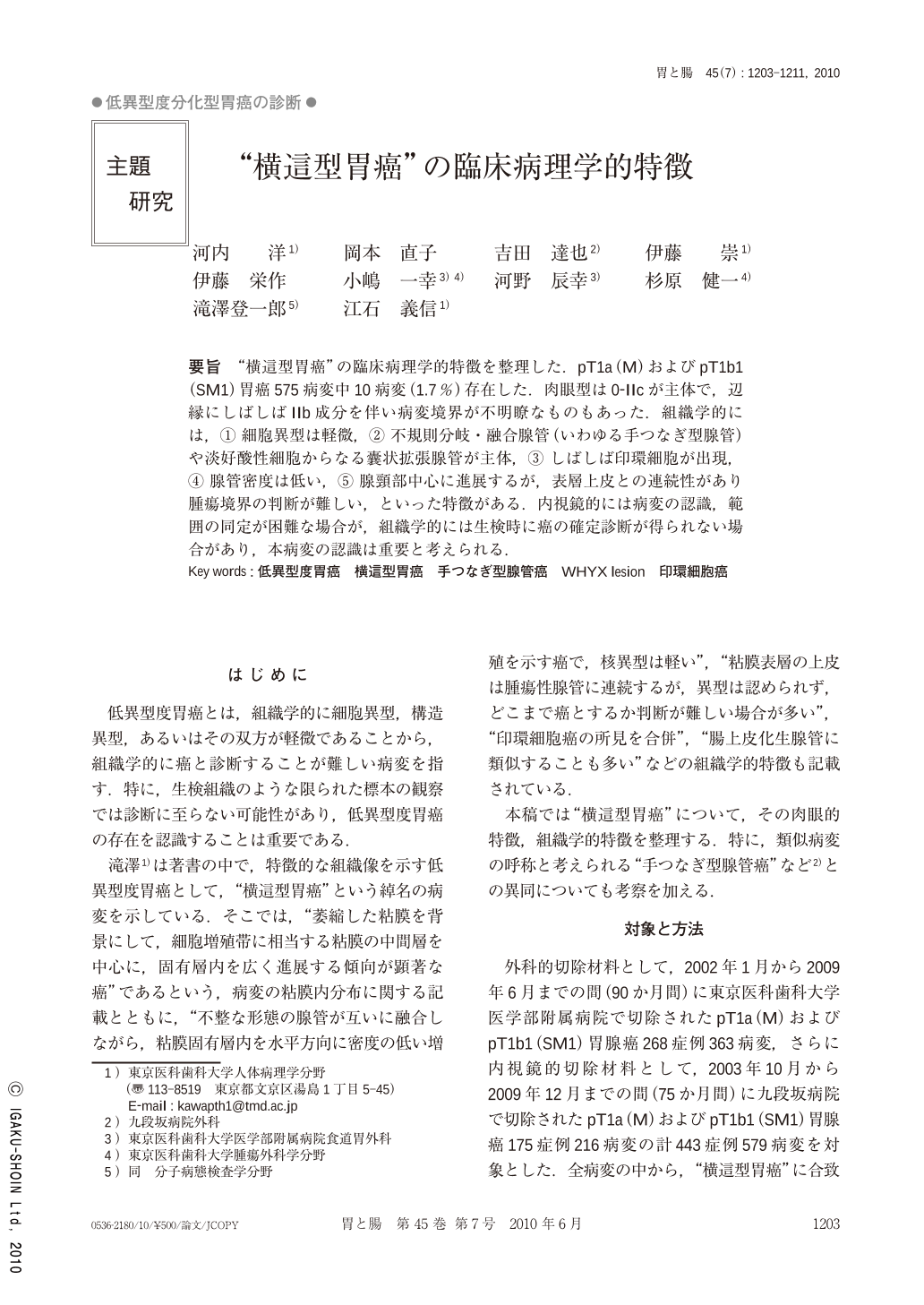Japanese
English
- 有料閲覧
- Abstract 文献概要
- 1ページ目 Look Inside
- 参考文献 Reference
- サイト内被引用 Cited by
要旨 “横這型胃癌"の臨床病理学的特徴を整理した.pT1a(M)およびpT1b1(SM1)胃癌575病変中10病変(1.7%)存在した.肉眼型は0-IIcが主体で,辺縁にしばしばIIb成分を伴い病変境界が不明瞭なものもあった.組織学的には,(1)細胞異型は軽微,(2)不規則分岐・融合腺管(いわゆる手つなぎ型腺管)や淡好酸性細胞からなる嚢状拡張腺管が主体,(3)しばしば印環細胞が出現,(4)腺管密度は低い,(5)腺頸部中心に進展するが,表層上皮との連続性があり腫瘍境界の判断が難しい,といった特徴がある.内視鏡的には病変の認識,範囲の同定が困難な場合が,組織学的には生検時に癌の確定診断が得られない場合があり,本病変の認識は重要と考えられる.
Clinicopathological implications of so-called “crawling-type" gastric adenocarcinoma was shown in the study. Frequency was only 1.7%(10/575)of examined pT1a(M)and pT1b1(SM1)cancer. Macroscopically, 0-IIc-type was predominant and 0-IIb-component often co-existed resulting in an unclear border. Histological characteristics were as follows :(1)Cancer cells showing low-grade cellular atypia,(2)mainly composed of irregularly branched/fused glands and cystic dilated glands with slightly eosinophilic cytoplasm,(3)co-existing with minor foci of signet ring cells,(4)low glandular-stromal ratio,(5)cancer glands occupying mainly the neck zone of the mucosa. Recognition of this type of cancer is essential for both clinicians and pathologists for appropriate diagnosis and treatment.

Copyright © 2010, Igaku-Shoin Ltd. All rights reserved.


